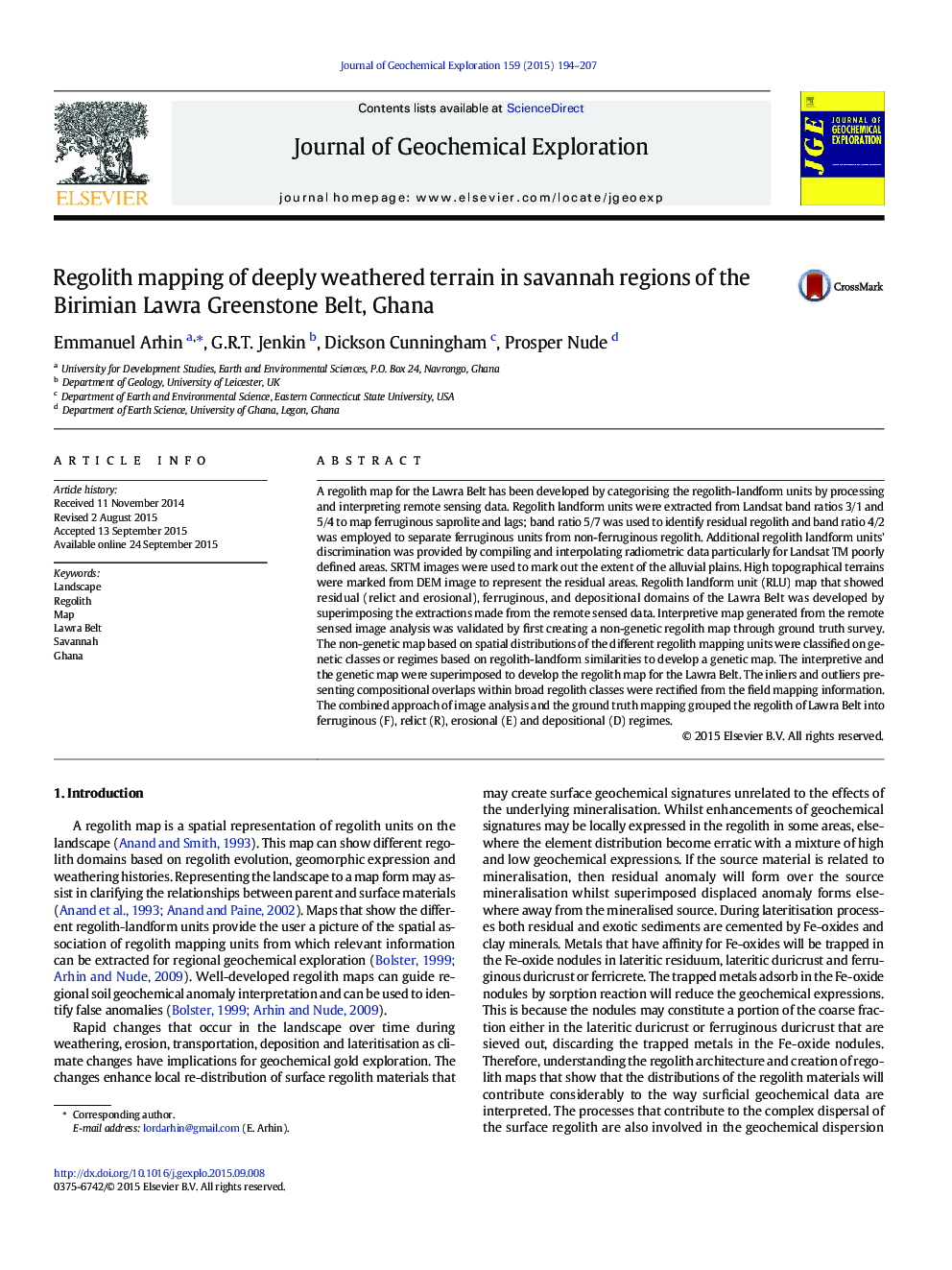| کد مقاله | کد نشریه | سال انتشار | مقاله انگلیسی | نسخه تمام متن |
|---|---|---|---|---|
| 4457060 | 1620900 | 2015 | 14 صفحه PDF | دانلود رایگان |

• Regolith landscape map was developed for mineral exploration survey works at the Lawra Belt.
• Remote sensing interpretation and field mapping was helpful approach in regolith map creation.
• Regolith boundary discrimination was from interpretation of genetic map and interpretative map.
• Spatial distributions of the regolith materials were identifiable on the non-genetic map.
• Correctness of remote sensing interpretation was validated from the genetic map.
A regolith map for the Lawra Belt has been developed by categorising the regolith-landform units by processing and interpreting remote sensing data. Regolith landform units were extracted from Landsat band ratios 3/1 and 5/4 to map ferruginous saprolite and lags; band ratio 5/7 was used to identify residual regolith and band ratio 4/2 was employed to separate ferruginous units from non-ferruginous regolith. Additional regolith landform units' discrimination was provided by compiling and interpolating radiometric data particularly for Landsat TM poorly defined areas. SRTM images were used to mark out the extent of the alluvial plains. High topographical terrains were marked from DEM image to represent the residual areas. Regolith landform unit (RLU) map that showed residual (relict and erosional), ferruginous, and depositional domains of the Lawra Belt was developed by superimposing the extractions made from the remote sensed data. Interpretive map generated from the remote sensed image analysis was validated by first creating a non-genetic regolith map through ground truth survey. The non-genetic map based on spatial distributions of the different regolith mapping units were classified on genetic classes or regimes based on regolith-landform similarities to develop a genetic map. The interpretive and the genetic map were superimposed to develop the regolith map for the Lawra Belt. The inliers and outliers presenting compositional overlaps within broad regolith classes were rectified from the field mapping information. The combined approach of image analysis and the ground truth mapping grouped the regolith of Lawra Belt into ferruginous (F), relict (R), erosional (E) and depositional (D) regimes.
Journal: Journal of Geochemical Exploration - Volume 159, December 2015, Pages 194–207